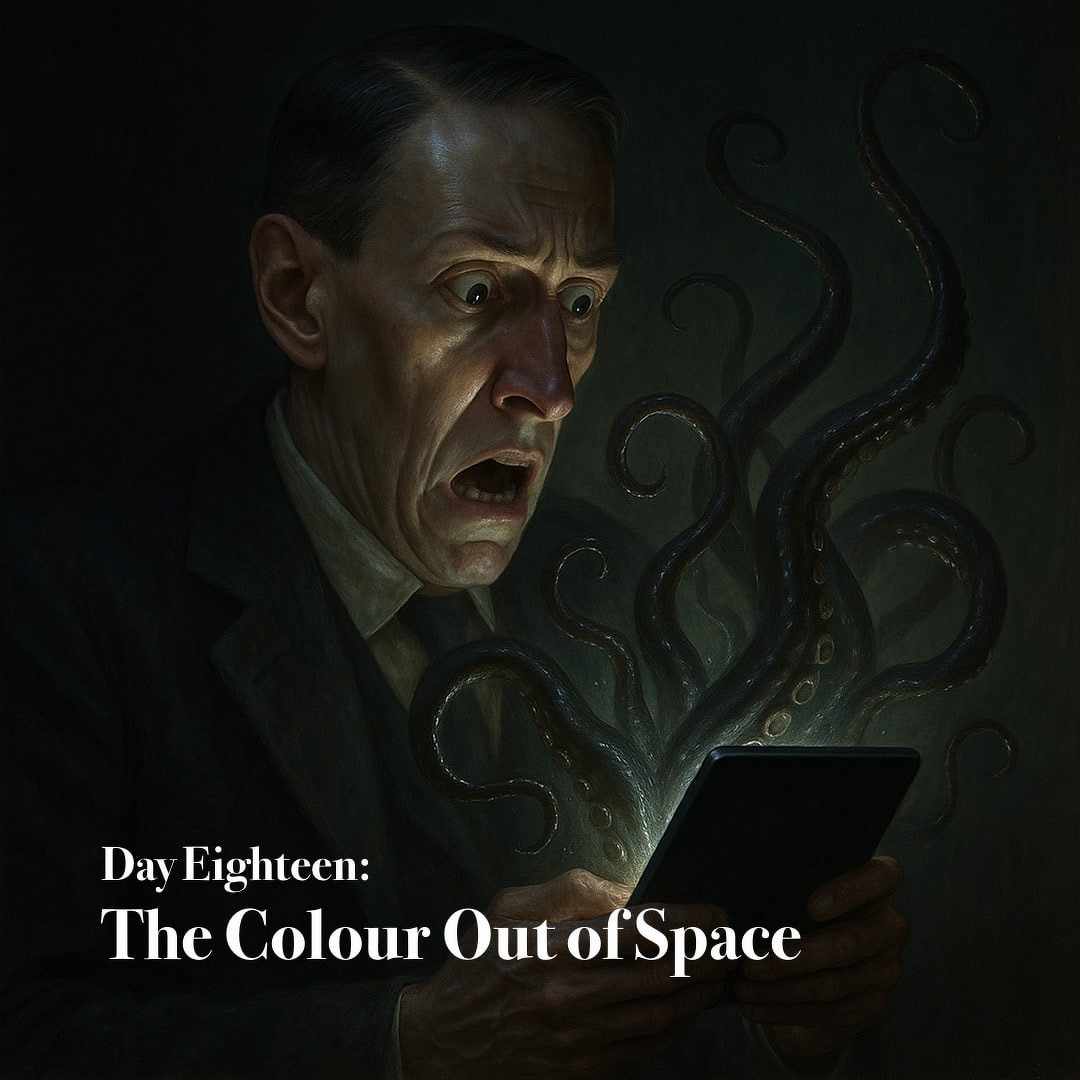The Colour Out of Space

Ever have I approached with trepidation those cinematic ventures which dare to translate the dread imaginings of H. P. Lovecraft into the vulgar medium of the screen. Too oft hath the unnamable been given form, and the ineffable, a mask of papier-mâché, until what should have inspired awe and trembling is rendered grotesque parody. For this reason do I favor works merely inspired by Lovecraft, rather than those which presume to adapt him outright.
Yet last month I steeled myself, and beheld Color Out of Space (2019), directed by Richard Stanley and with Nicolas Cage as its star. Long had I resisted, for I feared disappointment. In this telling, the Gardner farmstead is stricken by a meteor of radiant hue, whose alien essence poisons the soil, the well, and the very lives of those who dwell there. Strange botanies sprout, livestock twist into abominations, and human flesh is fused in ghastly amalgam. Madness reigns: Theresa and young Jack become a single monstrosity, Benny is lost, and Lavinia is claimed by forces from beyond. Nathan, maddened patriarch, ends his kin with grim mercy before his own fall. Only Ward, the hydrologist, endures to bear witness to the ashen blasted heath that remains, where once life flourished, and where now only silence and horror reign beneath a new-laid reservoir.
As a work of horror cinema, it suffices. Indeed, it surpasses many a clumsy attempt before it. As an adaptation of Lovecraft’s tale, it achieves more than most, though it yet falls short of that ungraspable something which no art may wholly render. Still, I give reverence to those who dared the attempt, and offer a word of praise: bravo!
Let us proceed to today’s tale, “The Colour Out of Space”.
In the hills beyond sombre Arkham lies a place the rustic folk shun. Ae blasted heath, where no wholesome thing will grow and where the very air reeks of an ancient blight. Into this desolation a Boston surveyor came, and there he sought out aged Ammi Pierce, the lone witness to the doom of the Gardner farm. From Pierce’s trembling lips came the tale: in the summer of 1882 a star-born stone fell upon Nahum Gardner’s land, within it a globule of no hue known to earth: an alien radiance beyond the mortal prism. Scholars examined it in vain, until lightning shattered the thing and it passed from sight, yet not from influence.
Thereafter the fields bore monstrous harvests, swollen yet unfit for consumption, and the cattle twisted into abhorrent forms before perishing. The Gardners themselves waned in flesh and spirit: the wife and son Thaddeus raving in the attic, the brothers Merwin and Zenas lost forever to the tainted well, and Nahum himself withering into madness, whispering that the Colour drank the very essence of life. Ammi, venturing into that accursed house, found the wife a grotesque mockery of being and released her mercifully. Soon after, Nahum too succumbed. When men of Arkham came with Ammi, they found bones at the well’s bottom and then beheld the unearthly Colour surge forth—rising into the firmament, yet leaving behind a fragment that sank into the soil, a remnant to poison the land for all time.
Thus was written “The Colour Out of Space” in March of 1927, wrought in the same season as The Case of Charles Dexter Ward and Lovecraft’s grand essay on the macabre. Though he spoke of Rhode Island’s Scituate Reservoir as seed, sages discerned other inspirations—the Quabbin works in Massachusetts, Charles Fort’s thunderstones, the tragedy of the Radium Girls, and even Goddard’s rockets clawing at the heavens. Lovecraft sought here to limn a terror wholly alien, a being beyond man’s feeble categories of life and death, its very essence unnameable save as Colour.
First appearing in Amazing Stories that September, it earned Lovecraft scant coin and tardy payment from “Hugo the Rat.” Yet critics hailed it, Edward O’Brien placing it upon the roll of honor, and in after years it was lauded as among his most perfect unions of science and dread. Scholars S. T. Joshi and Donald R. Burleson praised its nameless horror, while E. F. Bleiler deemed it the finest jewel of Amazing Stories. Now in the public domain, its baleful influence lingers, echoed in Brian Aldiss’s The Saliva Tree and Michael Shea’s sequel The Color Out of Time. Still the tale endures, a testament to an author’s attempt to evoke the truly inhuman, and to the fear that somewhere beneath the soil a fragment yet hungers.